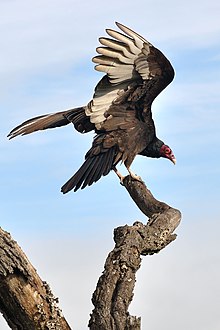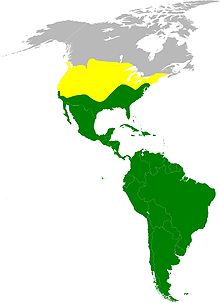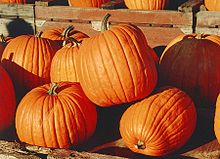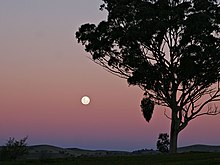
Hi Everybody!!
This is a well rounded post with Fat Ripe Pumpkins and the Hunter's Moon. It is, after all, Fall. The Summer Hummers are gone and likely in Mexico by now. The Buzzards and Vultures are coming back into the area, with new sightings everyday on the electric poles down the country roads to the local Veg Mart. There is one Turkey Buzzard I have been looking for and he appeared today. Some of You who have been with me awhile know who 'HE' is! It is my beloved King Buzz, back on Rainbow Creek again!
Your photostudy link is below with the creations by G+AutoBackUp for your smiling pleasure! Enjoy!

http://en.wikipedia.org/wiki/Pumpkin
Pumpkin
From Wikipedia, the free encyclopedia
Pumpkin refers to certain cultivars of squash, most commonly those of Cucurbita pepo, that are round, with smooth, slightly ribbed skin and deep yellow to orange coloration. The thick shell contains the seeds and pulp. Some exceptionally large cultivars of squash with similar appearance have also been derived from Cucurbita maxima. Specific cultivars of winter squash derived from other species, including C. argyrosperma, and C. moschata, are also sometimes called "pumpkin". In New Zealand and Australian English, the term "pumpkin" generally refers to the broader category called winter squash elsewhere.
Pumpkins, like other squash, are native to North America. Pumpkins are widely grown for commercial use, and are used both in food and recreation. Pumpkin pie, for instance, is a traditional part of Thanksgiving meals in the United States, although commercially canned pumpkin puree and pumpkin pie fillings are usually made from different kinds of winter squash than the pumpkins frequently carved as jack o'lanterns for decoration aroundHalloween.
Pumpkins, like other squash, are thought to have originated in North America. The oldest evidence, pumpkin-related seeds dating between 7000 and 5500 BC, were found in Mexico.[1][2]
Since some squash share the same botanical classifications as pumpkins, the names are frequently used interchangeably. One often used botanical classification relies on the characteristics of the stems: pumpkin stems are more rigid, prickly, and angular (with an approximate five-degree angle) than squash stems, which are generally softer, more rounded, and more flared where joined to the fruit.[3][4]
Traditional C. pepo pumpkins generally weigh between 6 and 18 pounds (2.7 and 8.2 kg), though the largest cultivars (of the species C. maxima) regularly reach weights of over 75 pounds (34 kg).[5]
The color of pumpkins is derived from the orange pigments abundant in them. The main nutrients are lutein and both alpha and beta carotene, the latter of which generatesvitamin A in the body.[6]
Etymology
The word pumpkin originates from the word pepon (πέπων), which is Greek for “large melon", something round and large.[7] The French adapted this word to pompon, which the British changed to pumpion and later American colonists changed that to the word we use today, "pumpkin".[1]
Terminology
The term "pumpkin" as it applies to winter squash has different meanings depending on variety and vernacular. In many areas, including North America and the United Kingdom, "pumpkin" traditionally refers to only certain round, orange varieties of winter squash, predominantly derived from Cucurbita pepo, while in Australian English, "pumpkin" can refer to winter squash of any appearance.
Taxonomy
All pumpkins are winter squash: mature fruit of certain species in the genus Cucurbita. Characteristics commonly used to define "pumpkin" include smooth and slightly ribbed skin,[8] and deep yellow to orange[8] color. Circa 2005, white pumpkins had become increasingly popular in the United States.[9] The term “pumpkin” has no agreed upon botanical or scientific meaning,[10] and is used interchangeably with "squash" and "winter squash" in some areas.
Distribution and habitation
Pumpkins are grown all around the world for a variety of reasons ranging from agricultural purposes (such as animal feed) to commercial and ornamental sales.[11] Of the seven continents, only Antarctica is unable to produce pumpkins; the biggest international producers of pumpkins include the United States, Canada, Mexico, India, and China.[1][12] The traditional American pumpkin is the Connecticut Field variety.[11]
Giant pumpkins
Main article: Atlantic Giant
The largest pumpkins are Cucurbita maxima. They were cultivated from the hubbard squash genotype, crossed with kabocha-pumpkin types by enthusiast farmers through intermittent effort since the early 19th century. As such germplasm is commercially provocative, a U.S. legal right was granted for the rounder phenotypes, levying them as constituting a variety, with the appellationAtlantic Giant. Eventually, this phenotype graduated back into the public domain, except now it had the name Atlantic Giant on its record (see USDA PVP # 8500204).
Weigh-off competitions for giant pumpkins are a popular festival activity. The world record held at 459 pounds (208 kg) until 1981, when Howard Dill (of Nova Scotia) broke the record with a pumpkin weighing 493.5 pounds (223.8 kg). Dill patented the seeds used to grow this giant pumpkin, deeming them Dill’s Atlantic Giant seeds, and drawing growers from around the world. Dill is credited for all of the giant pumpkins today, most of which are borne from crossing and re-crossing his patented seed with other varieties.[17] By 1996, giant pumpkins had crossed the 1,000-pound (450 kg) mark. The current world record holder is Ron Wallace's 2,009.0-pound (911.3 kg) Atlantic Giant pumpkin, which in September 2012 surpassed Jim and Kelsey Bryson's previous 2011 record of 1,818.5 pounds (824.9 kg).[18]
(Please see link for complete article)

http://en.wikipedia.org/wiki/Harvest
Harvest
From Wikipedia, the free encyclopedia
Harvest is the process of gathering mature crops from the fields. Reaping is the cutting ofgrain or pulse for harvest, typically using a scythe, sickle, or reaper.[1] The harvest marks the end of the growing season, or the growing cycle for a particular crop, and social importance of this event makes it the focus of seasonal celebrations such as a harvest festival, found in many religions. On smaller farms with minimal mechanization, harvesting is the most labor-intensive activity of the growing season. On large, mechanized farms, harvesting utilizes the most expensive and sophisticated farm machinery, like thecombine harvester. Harvesting in general usage includes an immediate post-harvest handling, all of the actions taken immediately after removing the crop—cooling, sorting, cleaning, packing—up to the point of further on-farm processing, or shipping to the wholesale or consumer market.

KING BUZZ RETURNS TO RAINBOW CREEK!!!!

| Turkey Vulture | |
|---|---|
 | |
| At Santa Teresa County Park, San Jose, California, US | |
| Conservation status | |
| Scientific classification | |
| Kingdom: | Animalia |
| Phylum: | Chordata |
| Class: | Aves |
| Order: | Incertae sedis (disputed) |
| Family: | Cathartidae |
| Genus: | Cathartes |
| Species: | C. aura |
| Binomial name | |
| Cathartes aura (Linnaeus, 1758) | |
 | |
Approximate range map:
| |






***************************
NEW FEATURE:
Your photostudy is now located in my G+Photo Album Gallery at the link below. Click on the link to go see pics of King Buzz and the Moon!
link:
https://plus.google.com/photos/117645114459863049265/albums/5938534054448068929
Many Thanks to G+AutoBackup for creating the quick clips below! Highlights of this album:



From the Google Search Index for October Full Moon:
Penumbral Lunar Eclipse 2013: Earth's Shadow To Fall On Full ...
www.huffingtonpost.com/.../penumbral-lunar-eclipse-october-18-2013_...
Oct 16, 2013 - October's full moon has a bonus in store for skywatchers this year. A penumbral lunar eclipse -- so called because only the incomplete outer ...
Full Moon Calendar Dates 2013 - Next Full Moon | MoonPhases.info
www.moonphases.info/full_moon_calendar_dates.html
Browse through the historical full moon calender for the years 2005 through 2012. ...Oct. 17. 12:13. Mon. 2005. Nov. 16. 00:56. Wed. 2005. Dec. 15. 16:15. Thu ... Lunar Eclipse, Full Moon Arrive Friday, October 18 - Neighborhood ...
windsor.patch.com/.../lunar-eclipse-full-moon-arrive-friday-october-18
7 days ago - A penumbral lunar eclipse will coincide with a full, or hunter's, moon in Windsor on Fri., Oct. 18, 2013. Here's a look at what viewing conditions ...
http://en.wikipedia.org/wiki/Full_moon
Full moon
From Wikipedia, the free encyclopedia
A full moon is the lunar phase that occurs when the Moon is completely illuminated as seen from the Earth. This occurs when the Moon is in opposition with the Sun (when it is on the opposite side of the Earth from the Sun; more precisely, when the ecliptic longitudes of the Sun and Moon differ by 180 degrees).[1] This means that the hemisphere of the Moon that is facing the Earth (the near side) is almost fully illuminated by the Sun and appears round (while the far side is almost completely unilluminated).
Lunar eclipses can occur only at full moon, where the moon's orbit allows it to pass through the Earth's shadow. Lunar eclipses do not occur every month because the moon usually passes above or below the Earth's shadow (which is mostly restricted to the ecliptic plane). Lunar eclipses can occur only when the full moon occurs near the two nodes of the orbit, either the ascending or descending node. This causes eclipses to only occur about every 6 months, and often 2 weeks before or after a solar eclipse at new moon at the opposite node.
The time interval between similar lunar phases—the synodic month—averages about 29.53 days. Therefore, in those lunar calendars in which each month begins on the new moon, the full moon falls on either the 14th or 15th of the lunar month. Because lunar months have a whole number of days, lunar months may be either 29 or 30 days long.
Characteristics[edit]
A full moon is often thought of as an event of a full night's duration. This is somewhat misleading because the Moon seen from Earth is continuously becoming larger or smaller (though much too slowly to notice with the naked eye). Its absolute maximum size occurs at the moment expansion has stopped, and when graphed, its tangent slope is zero. For any given location, about half of these absolute maximum full moons will be potentially visible, as the other half occur during the day, when the full moon is below the horizon. Many almanacslist full moons not just by date, but by their exact time as well, usually in Coordinated Universal Time (UTC). Typical monthly calendars that include phases of the moon may be off by one day if intended for use in a different time zone.
Full moons are generally a poor time to conduct astronomical observations, since the bright reflected sunlight from the moon overwhelms the dimmer light from stars.
On 21 December 2008, the full moon occurred closer to the Earth than it had at any time for the previous 15 years.[2]
Formula[edit]
The date and approximate time of a specific full moon (assuming a circular orbit) can be calculated from the following equation:[3]
where d is the number of days since 1 January 2000 00:00:00 in the Terrestrial Time scale used in astronomical ephemerides; forUniversal Time (UT) add the following approximate correction to d:
 days
days
where N is the number of full moons since the first full moon of 2000. The true time of a full moon may differ from this approximation by up to about 14.5 hours as a result of the non-circularity of the moon's orbit.[4] See New moon for an explanation of the formula and its parameters.
The age and apparent size of the full moon vary in a cycle of just under 14 synodic months, which has been referred to as a full moon cycle.
In folklore and tradition[edit]
See also: List of lunar deities and Lunar effect
Full moons are traditionally associated with temporal insomnia, insanity (hence the termslunacy and lunatic) and various "magical phenomena" such as lycanthropy. Psychologists, however, have found that there is no strong evidence for effects on human behavior around the time of a full moon.[5] They find that studies are generally not consistent, with some showing a positive effect and others showing a negative effect. In one instance, the 23 December 2000 issue of the British Medical Journal published two studies on dog bite admission to hospitals in England and Australia. The study of theBradford Royal Infirmary found that dog bites were twice as common during a full moon, whereas the study conducted by the public hospitals in Australia found that they were less likely.
Full moon names[edit]
Historically, month names are names of moons (lunations, not necessarily full moons) inlunisolar calendars. Since the introduction of the solar Julian calendar in the Roman Empire, and later the Gregorian calendar worldwide, month names have ceased to be perceived as "moon names". The traditional Old English month names were equated with the names of the Julian calendar from an early time (soon after Christianization, according to the testimony ofBede ca. AD 700).
Some full moons have developed new names in modern times, e.g. the blue moon, and the names "harvest moon" and "hunter's moon" for the full moons of autumn.
Harvest and Hunter's moons[edit]
"Harvest Moon" and "Hunter's Moon" are traditional terms for the full moons occurring in autumn, usually in September and October, respectively. The "Harvest Moon" is the full moon closest to autumnal equinox, and the "Hunter's Moon" is the one following it. The names are recorded from the early 18th century.[6] OED for "Harvest Moon" cites a 1706 reference, and for "Hunter's Moon" a 1710 edition of The British Apollo , where the term is attributed to "the country people" (The Country People call this the Hunters-Moon.) The names became traditional in American folklore, where they are now often popularly attributed to "the Native Americans".[7] The Feast of the Hunters' Moon is a yearly festival in Lafayette, Indiana, held in late September or early October each year since 1968.[8] In 2010, the Harvest moon occurred on the night of equinox itself (some 5½ hours after the point of equinox) for the first time since 1991.[9][10]
All full moons rise around the time of sunset. Because the moon orbits the earth in the same direction the earth is rotating, the moon rises later each day – on average about 50 minutes later each day (24/29.5 hours, or the number of hours in a solar day divided by the number of solar days it takes for the moon to orbit the earth). The Harvest Moon and Hunter's Moon are unique because the time difference between moonrises on successive evenings is much shorter than average. The moon rises approximately 30 minutes later from one night to the next, as seen from about 40 degrees N or S latitude. Thus, there is no long period of darkness between sunset and moonrise for several days following the actual date of the full moon.
Farmers' Almanacs[edit]
The Maine Farmers' Almanac from c. the 1930s began to publish "Indian" full moon names. The Farmers' Almanac (since 1955 published in Maine, but not the same publication as the Maine Farmers' Almanac) continues to do so.[11]
An early list of "Indian month names" was published in 1918 by Daniel Carter Beard in his The American Boy's Book of Signs, Signals and Symbols for use by the boy scouts. Beard's "Indian" month names were:
- January: Difficulty, Black Smoke; February: Racoon, Bare Spots on the Ground; March: Wind, Little Grass, Sore-Eye; April: Ducks, Goose-Eggs; May: Green Grass, Root-Food; June: Corn-Planting, Strawberry; July: Buffalo (Bull), Hot Sun; August: Harvest, Cow Buffalo; September: Wild Rice, Red Plum; October: Leaf-Falling, Nuts; November: Deer-Mating, Fur-Pelts, December: Wolves, Big Moon.[12]
Such names have gained currency in American folklore. They appear in print more widely outside of the almanac tradition from the 1990s in popular publications about the Moon. Mysteries of the Moon by Patricia Haddock ("Great Mysteries Series", Greenhaven Press, 1992) gave an extensive list of such names along with the individual tribal groups they were supposedly associated with.[13]Haddock supposes that certain "Colonial American" moon names were adopted from Algonquian languages (which were formerly spoken in the territory of New England), while others are based in European tradition (e.g. the Colonial American names for the May moon, "Milk Moon", "Mother's Moon", "Hare Moon" have no parallels in the supposed native names, while the name of November, "Beaver Moon" is supposedly based in the Algonquin).
The individual names given in Farmers' Almanac include:[clarification needed]
- January: "Wolf Moon" (this is the name of December in Beard 1918)[14] also "Old Moon"
- February: "Snow Moon", also "Hunger Moon"
- March: "Worm Moon", "Crow Moon", "Sap Moon", "Lenten Moon"
- April: "Seed Moon", "Pink Moon", "Sprouting Grass Moon", "Egg Moon" (c.f. "Goose-Egg" in Beard 1918), "Fish Moon"
- May: "Milk Moon", "Flower Moon", "Corn Planting Moon"
- June: "Mead Moon", "Strawberry Moon" (c.f. Beard 1918), "Rose Moon", "Thunder Moon"
- July: "Hay Moon", "Buck Moon", "Thunder Moon"
- August: "Corn Moon", "Sturgeon Moon", "Red Moon", "Green Corn Moon", "Grain Moon"
- September: "Harvest Moon", "Full Corn Moon",
- October: "Hunter's Moon", "Blood Moon"/"Sanguine Moon"
- November: "Beaver Moon", "Frosty Moon"
- December: "Oak Moon", "Cold Moon", "Long Nights Moon"

Halo around moon

...this is brendasue signing off from Rainbow Creek. See You next time!


O+O











No comments:
Post a Comment
Hi Everybody! Please say hello and follow so I know you are here! Due to the inconsideration of people trying to put commercials on my blog comment area, I have restricted use of anonymous posts. Sorry that some hurt all.
My public email is katescabin@gmail.com No spammers or trolls